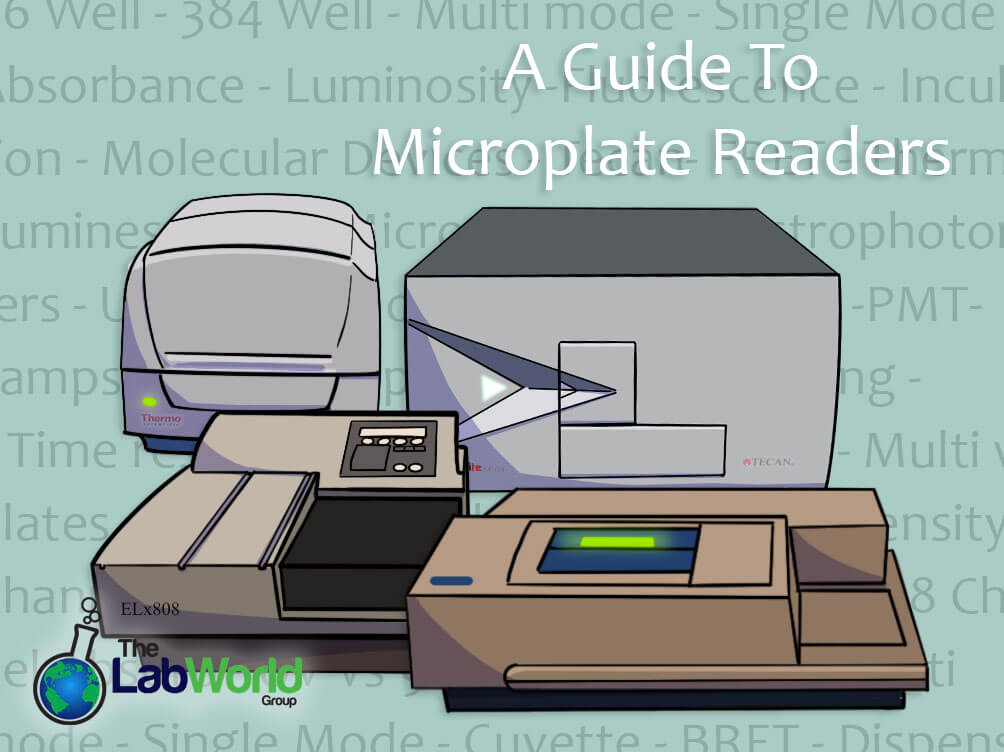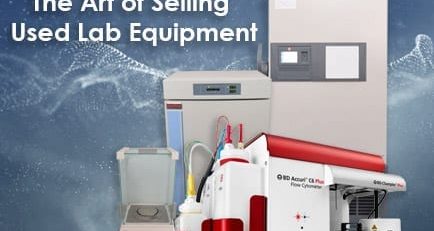
A Guide To Microplate Readers
Amanda2021-08-27T14:51:24+00:00Microplate readers have become an indispensable tool in today’s laboratory. These compact spectrophotometers expand not only on the number of samples you can measure at once but many are built to perform multiple methods of measurement. A microplate reader allows users to measure biological, chemical, and physical events and can provide either dedicated single-mode or multi-mode functions. Some brands offer modular systems that can be expanded to grow with your research. In the rest of the article, we will explore the variables that make plate readers so useful in the lab.
Microplate Reader vs Spectrophotometer: What’s the difference?
A microplate reader is essentially a spectrophotometer but with a few key differences. While a spectrophotometer works with a monochromator or filter-based optics to measure events in samples just like a microtiter plate reader, a spectrophotometer works with a single small sample size. Light is sent through the cuvette horizontally whereas with a microplate well, the light passes vertically. The cuvette capacity allows for a higher degree of precision and is ideal for times with sample availability is limited. However, that added sensitivity can complicate a reading with artifacts and trace elements.
A microplate reader on the other hand uses multiwell plates, usually 96 or 384 wells, sometimes up to 1536! This allows users to test many samples at once and can be particularly useful at the start of research. Multiple samples mean users can narrow a field of candidates, providing easy comparisons across uniform conditions. Another consideration is how quickly you want your results, how high your throughput should be, and whether you need shaking and incubation as part of your assay. You can read more about the differences between a Microplate Reader vs a Spectrophotometer here.
Single-Mode vs. Multimode Plate Readers: What’s the right call?
There is a broad range of plate readers out there, covering a variety of functions. One of the first questions users should consider is project scope. Will my research expand or is it focused on one principle? If it’s the latter, then finding an instrument that reads in multiple formats, or is even modular like those offered by Biotek, will come in handy down the line. Multi-mode readers allow for flexibility and save valuable bench space in the lab. However, if you know your lab’s needs are centered on one method then a single dedicated microplate spectrophotometer can provide dependable, precise results, saving you time and cutting down on initial cost.
Modes and Assays
Plate readers, as discussed above, can cover multiple reading functions in the same instrument. Absorbance readers and UV Vis readers use a specified wavelength to detect and quantify light photons that are absorbed or transmitted through a liquid sample in the plate wells. This can be achieved using either a monochromator or a filter-based system to get the desired wavelength. Other read modes include a variety of specialized Fluorescence Microplate Reader options such as Top and Bottom reading, Fluorescence intensity, Time-Resolved Fluorescence, and Fluorescence Polarization. Plate readers can also feature Luminescence reading where the light emitted by a substance is measured, either by chemical reaction or by bioluminescence. This does not involve excitation of the sample but can help clarify other measurements taken by a reader.
Microplate Reader Brands
Plate readers and their multitude of flavors are offered by brands long known for their dependable results and quality of components.
- Biotek plate readers have had many versions over the years, models are often modular, and usually, incorporate heating and shaking elements of control to an assay. They also can include dispensing modules allowing for the strategic addition of reagents during a run.
- Molecular Devices plate readers have a wider range that begins with dedicated single-mode Absorbance readers and UV Vis Options, and gradually increases the options as you go up in models, adding cuvette reads for traditional spectrophotometry, HTRF, alpha screen and western blot, even imaging!
- Tecan microplate readers are another steadfast option, iterating over the years on the wildly popular Infinite Series. The Infinite plate readers are usually upgradeable so you can count on this instrument sticking with you through your research.
- Thermo offers a broad range of dedicated multiskan microplate readers, from the modular and upgradeable Varioskan, down to a more focused fluorometric microplate reader and the routine application-friendly Multiskan.
In Conclusion
Whether you need a focused instrument or the flexibility of multiple reading options, a microplate reader can help you cover a lot of ground quickly. These lab workhorses can help get your research off the ground, narrow your experiment focus and increase productivity.
We offer a wide variety of plate readers from leading manufacturers and our microplate readers follow a strict quality control protocol both when initially taken in, and before they are sent off to their new home. Buying a gently used plate reader allows labs to get the most out of their dollar, possibly expanding the range of options available to them. As always, The Lab World Group is here to help, if there is a function you need and can’t find, let us know and we’ll work with you to find just the right fit.













